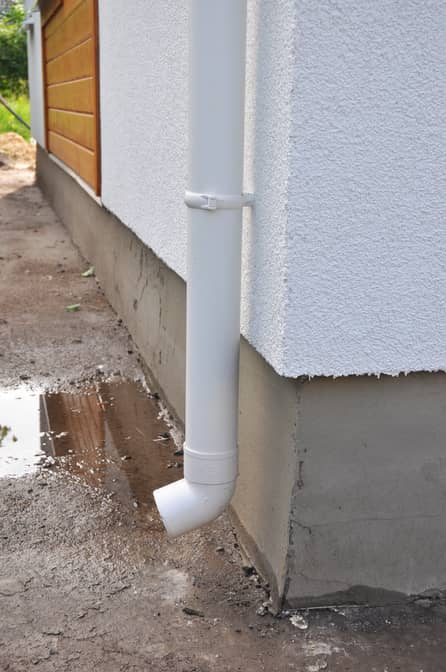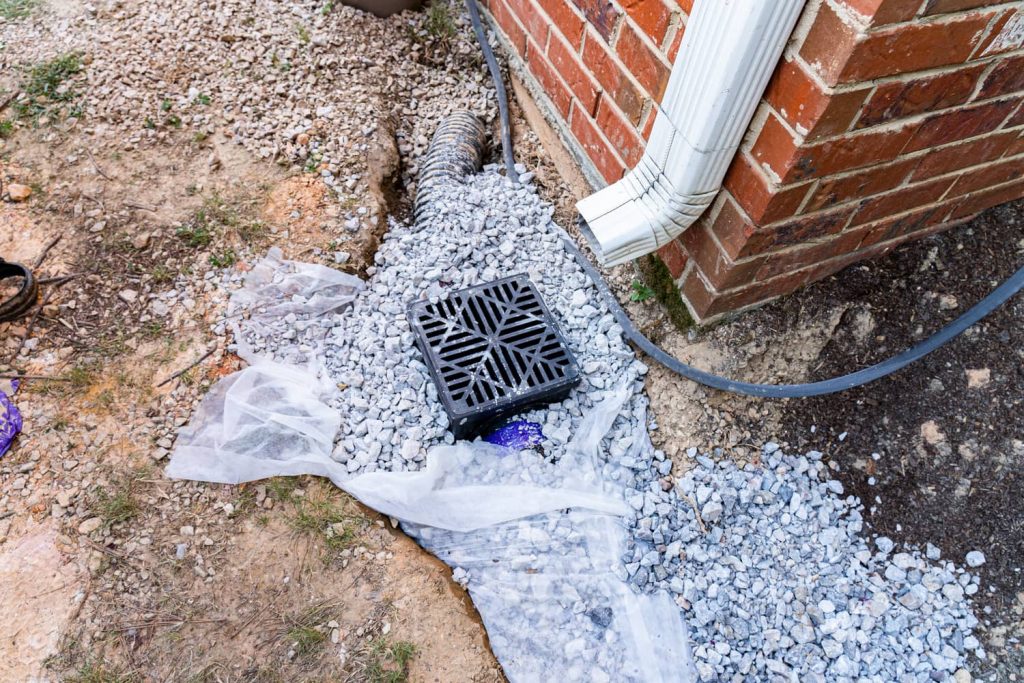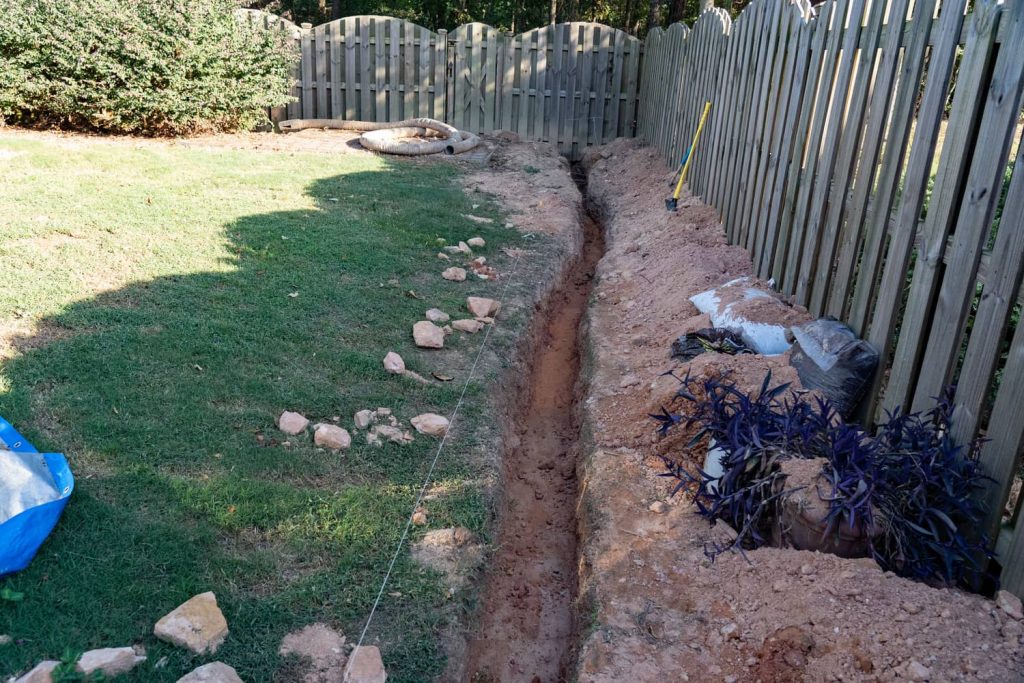
Whether you are buying a home or building a home, the most important part of the home is its’ foundation. Ensuring that the foundation is in great shape is very important to the longevity of a home. Also, always remember that a home’s foundation supports the entire remaining portion of the home. How to protect foundation from water? Having good gutters, solid drainage, great landscaping, and a working sump pump could help.
Let’s take a look below at what we can do to protect our foundation and our investment.
What Is A Foundation
A home’s foundation has many jobs. As homeowners, we often just see a concrete slab or concrete block walls with beams for the flooring. However, the basic understanding of a foundation is that it provides load-bearing support for the entire building structure above.
In addition, the foundation protects the inside of your home from the outside soil by acting as a vapor barrier and keeping water out of your home. Foundations also contain wall gaps to allow for expansion and contraction. Make sure to invest in ways to protect your foundation from water damage.

What Are My Options
Believe it or not, there are many ways that you can use to protect your house foundation from water or stop water intrusion. Let’s take a look at a list of options:
- Exposure of the foundation – make sure that your foundation has a visibility of 6 inches if it is brick or cement and 8 inches if it is wood from the exterior of the home foundation walls. Always keep your soil and mulch low enough so that they don’t block the top level of your foundation.
- Rain gutters – clean out your rain gutters on a regular basis. Leaving debris and dirt to pile up in your gutters will allow water to spill over and splash down next to your foundation. Over time, this could cause some damage to the foundation. If there are cracks to the foundation, you could start to see moisture build up in your basement or foundation so check your gutter system to make sure no repairs are needed. Also, consider cleaning the gutters at least twice a year.
- Downspouts – make sure that your downspouts are connected properly to the gutter system. Your downspouts should run water at least 10 feet away from your home. Consider purchasing downspout extensions at your local hardware store.
- Landscape slope – for every 10 feet should see a slope of 6 inches in your yard. Furthermore, this prevents water from pooling around your foundation so checking the grading of your landscaping and take the appropriate measures to ensure that water drains as far away from your home as possible.
- Water the foundation – keep the ground around your foundation moist. During the dry months your foundation can dry out and shrink. Once a big rain comes, the ground expands as it takes on water. If this happens too quickly, this could cause the foundation to crack and begin falling apart.
- Install Sump Pump – if you have a basement you will want a sump pump installed. Keep in mind that ground water has a way of getting into your basement. Having a sump pump can alleviate your groundwater concerns as it pumps the water out. Getting the ground water out of your basement will protect the foundation from any major water damage.
- Remove excess water quickly – if you have a broken pipe or major flood, you will want the water removed as soon as possible. Call your local professional damage restoration company.

How Can I Prevent This
When you are concerned about water getting access to your foundation, you should consider some upgrades to your yard and areas around your foundation. Here are some of the more popular choices:
- Install a French drainage system – install a french drain by digging a trench and running it away from the home on a 3-5 percent downslope. Fill the trench with gravel and a drain line that has perforations in it. As the water comes off the roof it will hit the drain and runoff away from your home.
- Keep your downspouts 10 feet away – as mentioned above, running your downspouts 10 feet away from the home will ensure that all rainwater flows away from your foundation. In many cases, homeowners will dig a hole and trench to bury their downspout connection. This gives the appearance that the water is just being directed directly into the ground.
- Regrade your homes soil and landscaping – the top of your soil/lawn should slope at least 6 inches within 10 feet of the foundation. This allows for water to run down the slope of the yard. Always ensure that your create a proper grading to prevent moisture from building up under your foundation.
- Create a basement exterior drainage system – also if your basement does not have a footer drain or weeping tile, you need to install something to drain the water from your basement or crawl space. Ideally, any drain in your basement would run to a sump pump. Your sump pump would then activate to carry any excess water out of the basement or crawl space and prevent flooding.
- Complete maintenance on your gutters – keeping debris and leaves out of your gutters is really important. Always remember that if your gutters are clogged, they cannot drain. The backed up water will then spill over and splash next to your foundation. This can create erosion in your soil around the foundation. Consider installing a gutter guard to see if that is effective for your maintenance.
Other Recommended Maintenance
Now that you have learned about how to prevent water from damaging your home’s foundation. You should consider figuring out what to put around your foundation. As stated above, proper landscaping can help keep water away from your home’s foundation and basement. Make sure to read up on the best landscaping choices.
Next, consider that your foundation needs some extra support so how exactly can you create an extra barrier between your foundation and the exterior? Consider sealing between the foundation and the soil of your yard. This could be an easy way to add a layer of protection to your foundation.
Lastly, check on a gutter system. If you do not have a gutter system, it is a great idea to look into having one installed. A seamless gutter system is possibly the best system that you could purchase to keep water moving away from the home. Make sure to read up on this option of gutters before you purchase a gutter system for your home.

When Do I Call A Professional
Calling on a professional landscaper or licensed contractor to assist you with your exterior projects. Not only can they regrade your landscaping, but they can dig trenches quickly and install your french drains and extended downspouts.
If you aren’t sure what you need to protect your home’s foundation, call on your local home inspection team. The home inspection team can make recommendations on a reputable professional landscaper or licensed contractor to meet your needs and get a free estimate.
Conclusion
Protecting your foundation from water is important. The last thing you want is water coming into the home. Adding new plants, trees, and areas of grass may help protect it. Also, making sure the gradient of the land allows the water to flow away from the home. This can help the foundation stay healthy and keep your home safe.
Have a home inspection if you are concerned about the foundation. Call Alpha Building Inspections and they can help recommend areas to fix in the yard or even a professional landscaper in Merrimack, NH, and surrounding areas.


